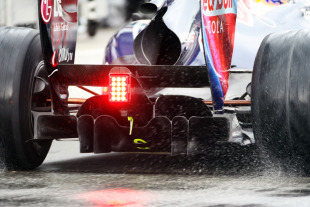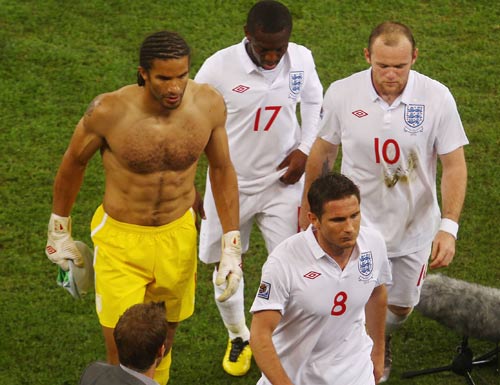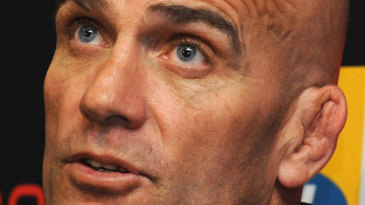ESPNF1 quizzes McLaren's engineering director Paddy Lowe on the main changes to Formula One next season

Ahead of a more comprehensive overhaul of the rules in 2013, 2011 will see four major changes in the sport with something of a scatter-gun approach. One is out of necessity (a switch to Pirelli tyres), one is due to common sense (the ban on double diffusers), one is in order to spice up the racing (driver-adjustable rear wings) and one is as a nod towards a greener future (the return Kinetic Energy Recovery Systems).
First on the list was KERS, a system that converts otherwise wasted kinetic energy from the drive train under braking and turns it into a power boost to be used on the next lap. McLaren invested heavily in the technology in 2009 and was one of only two teams (the other being Ferrari) to win a race with it.
However, KERS was widely shunned by the rest of the grid on grounds of cost and the inherent weight of a unit. Finding a place in the chassis to store bulky batteries was problematic, but it was the adverse effect on performance by skewing weight distribution that really put the engineers off.
To prevent history repeating, the overall weight of the chassis is being increased to allow teams to accommodate KERS, a decision Lowe is confident will have the desired effect.
"If you've got a good KERS system you can get an advantage from it but, as we saw in 2009, it's not easy performance," Lowe said. "By increasing the weight limit I think there is a lot more margin than there was in 2009 so that should open the door to allow many more players to deploy KERS profitably performance wise. That's been the key rather than increasing the power or increasing the energy, it was the weight that was the biggest problem in 2009."

"I think it's very difficult to increase the power and there is a limit to what you can achieve anyway just using the rear axle," he said. "At the moment it's 60KW, potentially you can make 100KW work but you're on a law of diminishing returns as to what you can achieve around a lap, because there is only so much braking going on at that axle from which you can recover the energy.
"The bigger factor was that everybody had developed their KERS around 60KW and if you change the energy it is really a clean sheet of paper for those designs. Given that KERS has been on, off, on - even this year it has been a relatively late decision to adopt KERS - the teams are not really in a position either timing wise or, to be quite honest, financially to do that. It would be a lot of money to start again with a different power level. Whereas what we can do is carry over much of the designs and equipment that was used in 2009."
Next up is the ban on double diffusers; a decision widely accepted as positive, but believed to be two years too late in some corners of the paddock. There was a theory doing the rounds that the FIA did not ban the system at the first time of asking as it was under pressure from the powers that be to disrupt the new-found unity among the teams under FOTA. At the time FOTA was threatening to create a breakaway series and by keeping double diffusers it was possible to disrupt that unity and divide and conquer. Just a theory, of course.
However, with such threats resigned to the history books with the signing of the new Concorde Agreement in 2009, double diffusers have finally been given the boot in order to peg back cornering speeds and lessen the disruptive wake from the rear of cars. If successful it could help spur overtaking but Lowe reckons it won't be long until the teams claw back the lost lap time.

Lowe reckons the introduction of new driver-adjustable rear wings will play a big part in recouping some of that lap time in qualifying.
"It will be permissible to use that at any time you like during the qualifying lap, so when you add that back in the qualifying times will probably be just as quick as they are now, if not potentially quicker. Race times will be slower but that flap will probably give you a second a lap or so if you're deploying it correctly."
Of course the main impetus behind the new wings is to increase overtaking as drivers will be able to use it on certain parts of the circuit in order to cut drag and overtake on the straights. It will have a similar affect to an F-duct this season, but Lowe reckons it will be "at least twice as powerful". As for the innovative F-duct - which Lowe was instrumental in pioneering - it will be banned.
Last, but most certainly not least, is the switch to Pirelli tyres. Although the new tyres will be constructed to exactly the same specifications as this year's Bridgestones, there are still a lot of questions for the teams, which will not get their hands on the tyre until the end of this season.
"It's an unknown obviously," Lowe admitted. "In theory they should be exactly the same as today's tyres because that has been the instruction to Pirelli, to work to exactly the same rules as we have now and they've been given the same specification as we have now. In practice of course it's a different supplier so they will have a different philosophy, the internal constructions will be different, the compounds will be different. These companies develop their own architectures and their own chemistries that they shield very carefully from each other. So it seems unlikely that they can, or would even want to produce exactly the same as Bridgestone."
This creates a problem as it means all the teams on the grid have started work on their 2011 cars without any real understanding of the tyres. To avoid them getting caught out with the wrong weight distribution, FOTA has agreed on a simple solution.

"What the teams agreed was an insurance policy to say that for one year only the front-to-rear weight distribution will be fixed to a legal range," Lowe explained. "And the way that's being achieved is to set - only for qualifying and not in the race - the front axle weight above a certain amount and the rear axle weight above a certain amount. When you do the maths with the total weight that is permitted, it's limiting to just a 1% range of weight distribution when you're in qualifying format.
"That should avoid us suddenly realising in February that we took the wrong gamble or that two teams got it right, five teams got it half right and all the others have to redesign their cars. That would be a very expensive and unfair because it is literally a gamble. I have no knowledge even now about the tyres, and we will not have knowledge until the Abu Dhabi test."
More so than in recent years, the changes for 2011 all seem a little last minute. But Lowe has no concerns (at least none that he is letting on) and is even looking for new innovations - like this year's F-duct - within the 2011 regulations.
"It's in human nature to keep looking. You keep thinking there isn't scope to come up with new ideas because the rule book keeps getting thicker and thicker every year depressingly, but we do find things and next year is another year and we will see what we can come up with.
"The slight worry is whether what we do innovate is relevant. Of course that was the accusation with the F-duct; it's a technology that has just been specifically tuned to a loop hole in a rule book. But then most of Formula One is that way anyway. That is something we need to look at as a sport to see how we direct that to deliver innovation that is relevant to the world at large."
Once again F1 will have to juggle its priorities as it looks to the future.
Laurence Edmondson is an assistant editor on ESPNF1
© ESPN Sports Media Ltd.
 Laurence Edmondson is deputy editor of ESPNF1 Laurence Edmondson grew up on a Sunday afternoon diet of Ayrton Senna and Nigel Mansell and first stepped in the paddock as a Bridgestone competition finalist in 2005. He worked for ITV-F1 after graduating from university and has been ESPNF1's deputy editor since 2010
Laurence Edmondson is deputy editor of ESPNF1 Laurence Edmondson grew up on a Sunday afternoon diet of Ayrton Senna and Nigel Mansell and first stepped in the paddock as a Bridgestone competition finalist in 2005. He worked for ITV-F1 after graduating from university and has been ESPNF1's deputy editor since 2010

